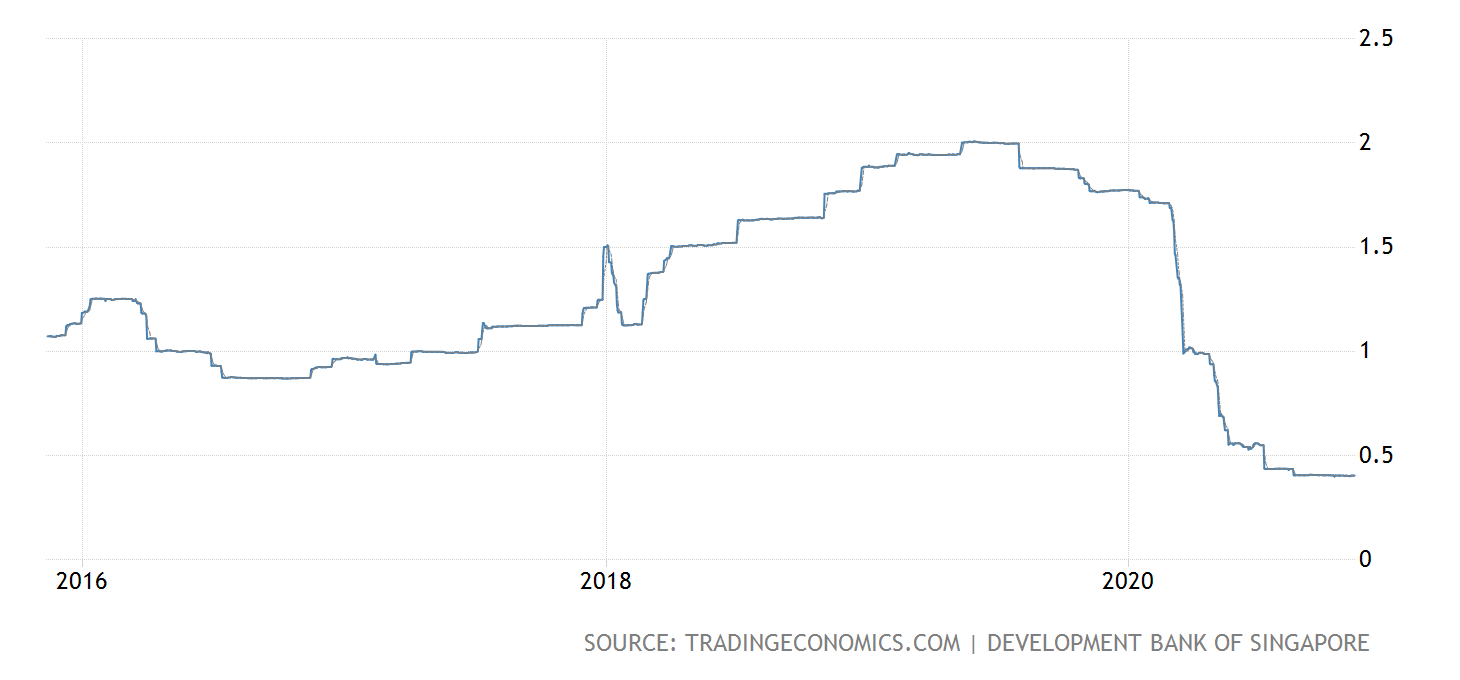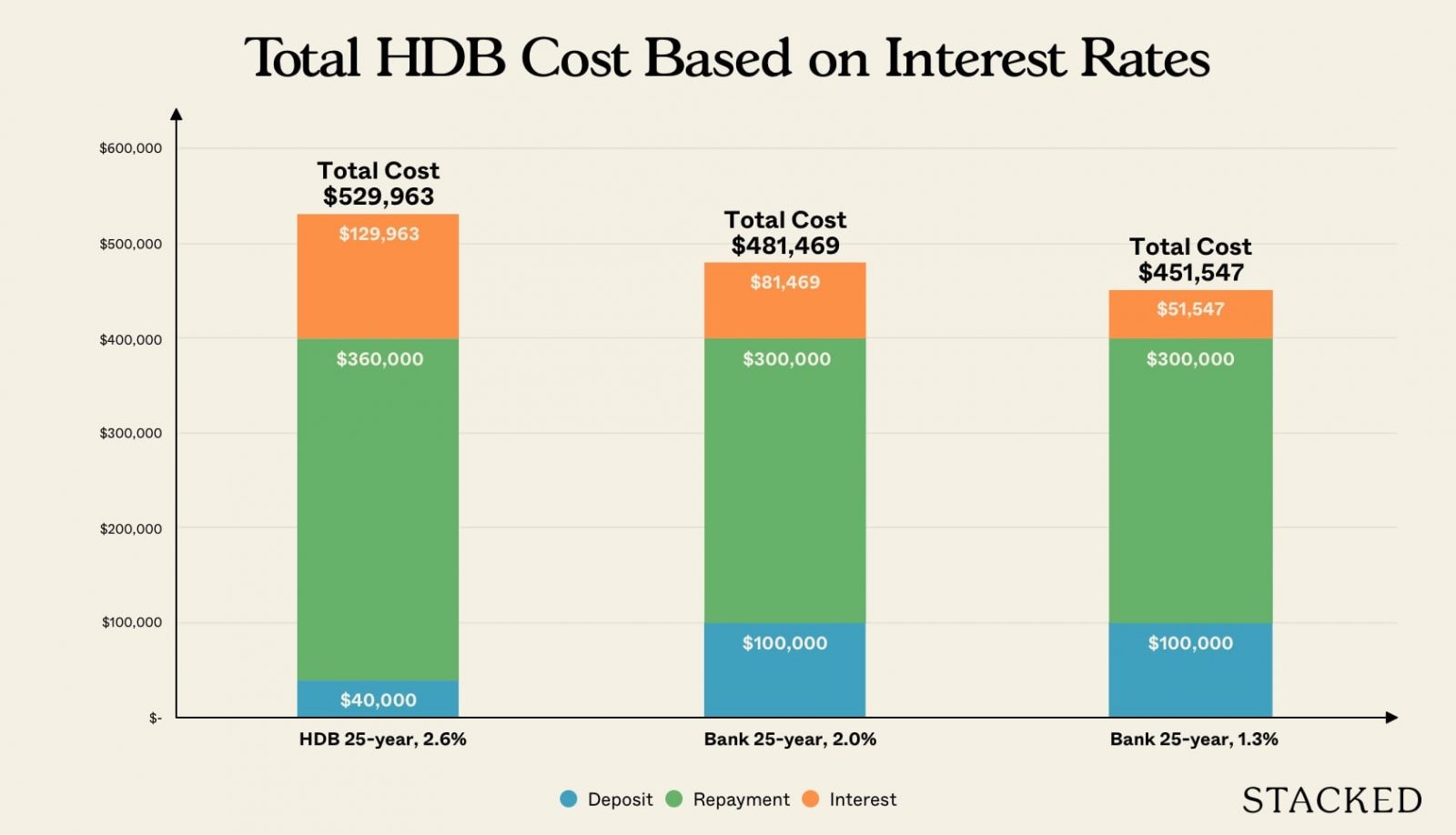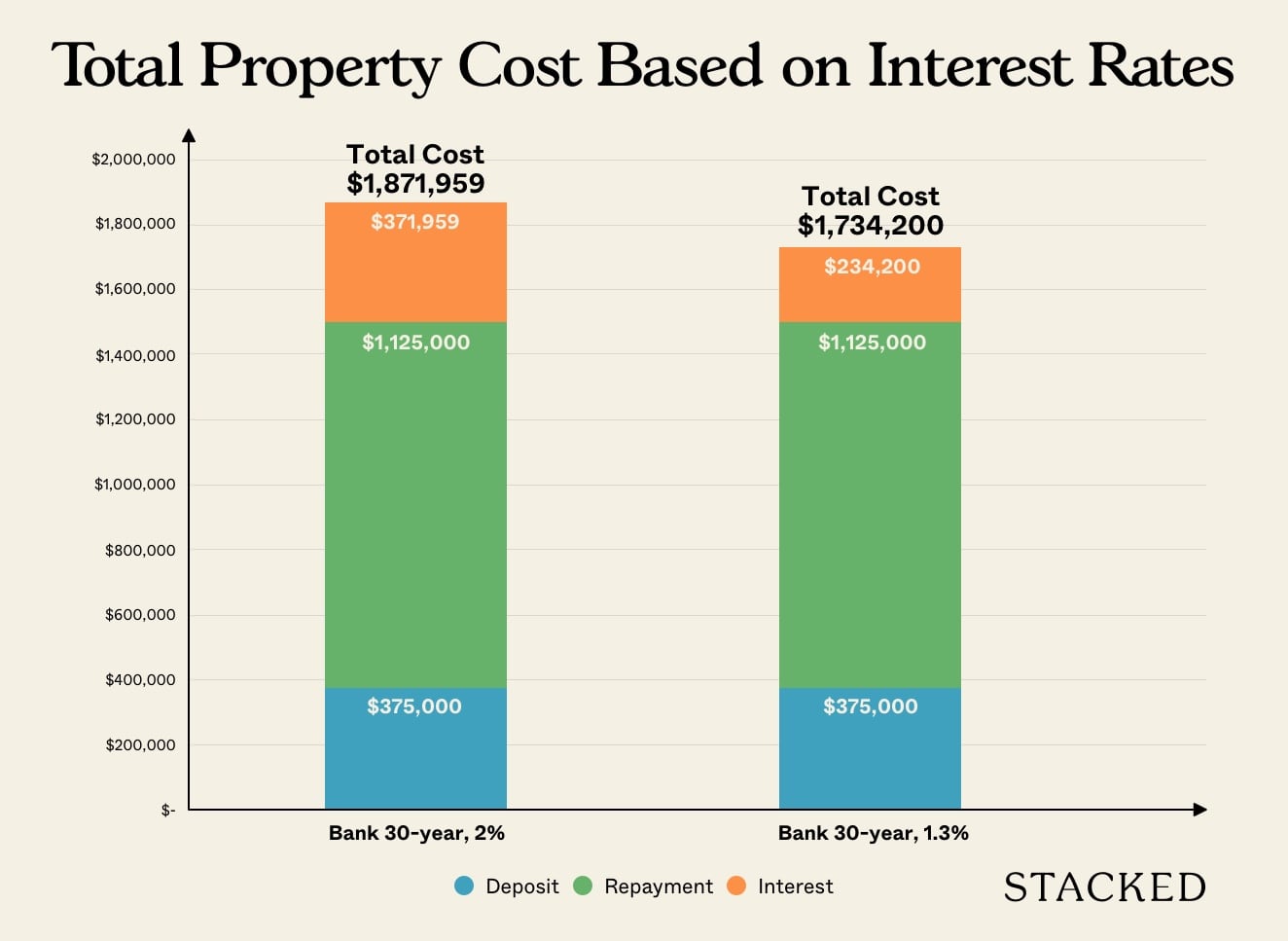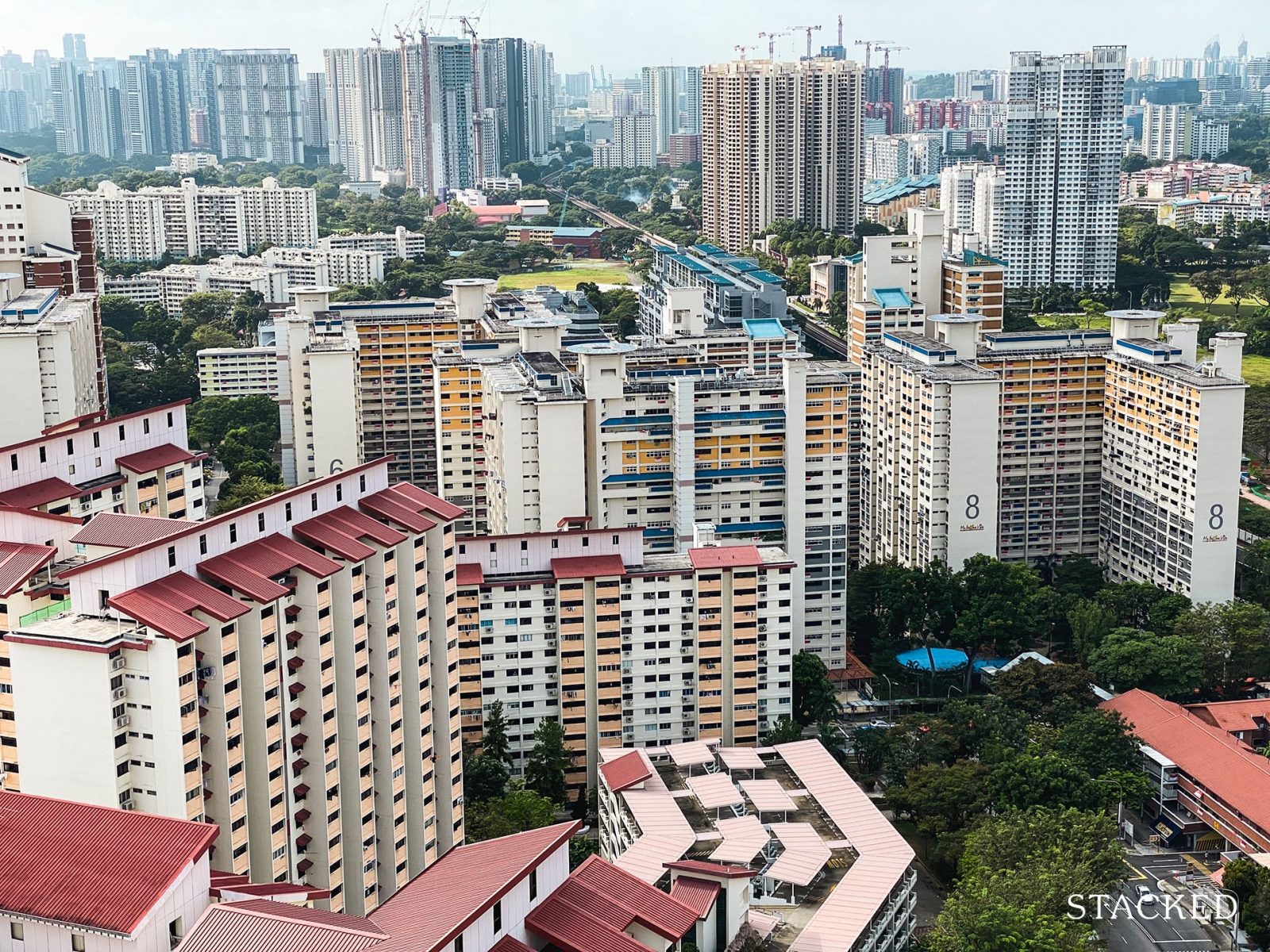How Does 2020’s Low Interest Rates Impact Your Property Purchase?

Get The Property Insights Serious Buyers Read First: Join 50,000+ readers who rely on our weekly breakdowns of Singapore’s property market.
A seasoned content strategist with over 17 years in the real estate and financial journalism sectors, Ryan has built a reputation for transforming complex industry jargon into accessible knowledge. With a track record of writing and editing for leading financial platforms and publications, Ryan's expertise has been recognised across various media outlets. His role as a former content editor for 99.co and a co-host for CNA 938's Open House programme underscores his commitment to providing valuable insights into the property market.
If you have been on the lookout for a home this year, you’ve probably heard this many times by now.
Now is a good time to buy, as the costs of borrowing money is so much lower.
Put simply, a $1 million mortgage spread over 30 years based on the current interest rates of 1.3% would mean monthly repayments of $3,356. Compare this to when interest rates were at 2% – your monthly repayments would have been $3,696 instead, which is a 10 per cent decrease.
In fact, cheap mortgages are even cited as a contributing factor to the rise in private home prices.
Check the news, and you’ll see there’s some truth to it. As early as July 2020, Singaporean home owners were crowding bank and loan comparison websites to refinance. This is when homeowners switch from their existing loan packages to new ones, to keep the interest rate low; and many are willing to do it despite the cost ($2,500 to $3,000) and inconvenience.
But how much of a difference does a single percentage point – or even less than that – really make to your home loan? We took a look at the numbers:
First, a quick explanation of the interest rates
Many – but not all – home loans are pegged to the Singapore Interbank Offered Rate (SIBOR). The SIBOR rate can be checked on The Association of Banks in Singapore (ABS) website; it reflects the interest rate at which banks are lending to each other.
These home loans have an interest rate based on the prevailing SIBOR rate, plus the bank’s spread. For example, the interest rate may be written as such:
Year 1: 3M SIBOR + 0.9%
This means the interest rate for the first three years is the Three Month (3M) SIBOR rate, plus the bank’s spread of 0.7 per cent. So if the 3M SIBOR rate happens to be 0.4, then the interest rate would be 1.3 per cent per annum.
The SIBOR rate fluctuates all the time though; so the term “3M” indicates how often your loan rate is revised to meet SIBOR. 3M means your loan interest rate will be adjusted every three months, while 1M means it changes every month.
The situation in 2018 versus 2020

In October 2018, the 1M SIBOR rate was 1.51 per cent, and the 3M SIBOR rate was 1.64 per cent.
In October 2020, however, the 1M SIBOR rate was 0.25 per cent, while the 3M SIBOR rate was 0.40 per cent.
Note, however, that bank spreads also go up or down. In many cases, the bank will raise its spread in the fourth year and thereafter. In addition, the bank will often raise its spread when the interest rate falls to record lows, such as in the current environment.
In general, interest rates in 2018 averaged around two per cent per annum, whereas they average just 1.3 per cent today.
Let’s look at a few simplified scenarios, to give you a sense of the difference:
Difference for HDB flat

We’ll use the example of a $400,000 flat. Say you receive the maximum bank loan of $300,000 for the flat, and have a 25-year loan-tenure.
| At 2% interest | At 1.3% interest | |
| Est. monthly repayment | $1,272, of which $500 accounts for interest repayment | $1,172, of which $325 accounts for interest repayment |
| Est. interest repayments | $81,469 | $51,547 |
| Est. total repayments | $381,469 | $351,547 |
| Est. amount you actually pay for the flat | $481,469 | $451,547 |
Using HDB Concessionary Loan
If you use an HDB loan, the amount you can borrow rises to $360,000. The interest rate for HDB loans is unrelated to SIBOR; it is always 0.1 per cent above the prevailing CPF rate (2.6 per cent).
| Est. monthly repayment | $1,633, of which $780 accounts for interest repayment |
| Est. interest repayment | $129,963 |
| Est. total repayment | $489,963 |
Difference for private non-landed property

Say you purchase a condo unit for $1.5 million, for the maximum loan tenure of 30 years. The maximum allowable loan is $1.125 million.
| At 2% interest | At 1.3% interest | |
| Est. monthly repayment | $4,158, of which $1,875 accounts for interest repayment | $3,776, of which $1,219 accounts for interest repayment |
| Est. interest repayments | $371,959 | $234,200 |
| Est. total repayments | $1,496,959 | $1,359,200 |
| Est. amount you actually pay for the unit | $1,871,959 | $1,734,200 |
At this point, it is important for me to point out – the illustrated numbers above was just to show you how interest rates can affect your property purchase. Remember that low interest rates won’t be here forever. Don’t just base your entire financial calculations on current monthly instalments. When the pandemic does blow over, interest rates will rise against inflation and the SIBOR will rise.
More from Stacked
A $13k Condo Renovation Breakdown: How This Creative Homeowner Self-Designed & Decorated Their 732 Sqft Home
Renovating a relatively small space can be quite challenging. You have to be creative with your design choices in order…
If you are taking a loan during this period, do note that your repayments will rise in the future when the interest rates go up. Plan ahead accordingly to see if you can still afford the monthly repayments when it does go up.

Property Advice10 Things a First Time Condo Buyer Should Look Out For To Avoid Regret
by Druce TeoThe interest rate will affect your resale gains and rental yields
This is one of the key variables that property investors need to consider, aside from others like appreciation rates and the rental market.
Some property investors even try to peg their rental rates to their interest rates. For example, say you pay $3,776 per month, of which $1,219 is the interest component. You also have various fees (e.g. maintenance fees, property tax) that add up to about $700 a month. You then know your rental income must be at least $1,919 per month, to offset the mortgage and recurring fees.
Even if you don’t use this method, the simple fact is that lower monthly costs translate to a higher net rental yield; thus making properties more attractive in a low interest environment.
This can also be a motive to check for cheaper loan rates every few years*, and constantly reprice or refinance to keep the rate down.
*Most bank loans raise the spread on the fourth year or beyond.
How will the low interest rates affect your home buying decision going forward?
- Lower interest rates won’t help your loan application, unfortunately
- Flat buyers may want to consider bank loans instead
- You’ll want to focus on the net rental yields to see the real advantage
1. Lower interest rates won’t help your loan application, unfortunately
The lower interest rate doesn’t make it easier to qualify for home loans; sadly, that’s not how it works. The banks will use a projected interest rate of 3.5 per cent, with regard to determining whether you qualify. This is to ensure you can cope if interest rates rise later.
If you didn’t qualify before, you still won’t qualify now; even if the monthly loan repayment would be lower.
2. Flat buyers may want to consider bank loans instead

You can buy an HDB flat with a bank loan if you prefer, or refinance from your HDB loan to a bank loan (but not the other way around).
Flat owners who are in the last few years of their loan tenure – or who are intending to sell the flat soon – could save money by using the cheaper bank rates for the remaining years.
The US Federal Reserve, which sets interest rates that affect SIBOR, is projecting near-zero rates till 2023. Even after that, the rate will take years to normalise as the world recovers from Coronavirus.
3. You’ll want to focus on the net rental yields to see the real advantage
You don’t really see the advantage of low interest rates with the gross rental yield (annual rental income / property price). But if you examine net rental yield, which accounts for recurring costs such as mortgage repayments, you’ll see the low interest rates could make up somewhat or the softening rental market.
This may not suffice to fully dispel the cloud of doom cast by Covid-19, but it is a bonus.
If you’re currently paying higher rates, you can switch to cheaper loan packages on the market
This can be done in two ways: repricing or refinancing.
If you can find a cheaper loan package with the same bank, you can reprice into it. This typically incurs a fee of around $800. However, some home loan packages offer “free repricing” options, which means you may be able to do it at no cost.
If the cheapest loan package is with another bank, you’ll have to refinance instead. This incurs conveyancing fees of between $2,500 to $3,000. In addition, do note that you’ll have to go through the loan application process all over again – your property has to be valued, you need to provide proof of income, etc. If your financial situation has worsened, there’s a chance you may not qualify for the new loan; even if you were previously approved.
In addition, you should be sure you won’t incur any penalties for refinancing. Some home-loans come with lock-in clauses, that charge penalties of up to 1.5 per cent of the undisbursed loan amount. These lock-in periods usually expire after three to five years, so you should wait till that point.
If you need help switching to a cheaper loan, contact us on Facebook. We can help you find the lowest rates, and help you through the paperwork (it’s free). If you’re just about to buy to take advantage of low rates, however, you can check out the latest property news and reviews on Stacked.
If you’d like to get in touch for a more in-depth consultation, you can do so here.
Ryan J. Ong
A seasoned content strategist with over 17 years in the real estate and financial journalism sectors, Ryan has built a reputation for transforming complex industry jargon into accessible knowledge. With a track record of writing and editing for leading financial platforms and publications, Ryan's expertise has been recognised across various media outlets. His role as a former content editor for 99.co and a co-host for CNA 938's Open House programme underscores his commitment to providing valuable insights into the property market.Read next from Property Market Commentary

Property Market Commentary I Lived In Bayshore When It Was ‘Ulu’. Here’s How Much It Has Changed

Property Market Commentary Why The Singapore Property Market Will Be Different In 2026 — And It’s Not Just About Prices

Property Market Commentary 2025 Year-End Review Of The Singapore Property Market: What The Numbers Reveal

Property Market Commentary How The HDB Resale Market Performed In 2025, And What It Means For 2026 Prices
Latest Posts

Singapore Property News This HDB Just Crossed $1.3M For The First Time — In An Unexpected Area

Singapore Property News “I Never Thought I’d Be Sued by a Tenant.” What Long-Time Landlords in Singapore Miss

Singapore Property News HDB Resale Prices Finally Slowed in 2025 — Will It Continue in 2026?

Singapore Property News Breaking News: District 23 Condo Sells Out In Under Two Years At $2,120 Psf Average

On The Market Here Are The Cheapest 3-Bedroom Condos in Central Singapore You Can Still Buy From $1.15M

Pro This 21-Year-Old Condo Didn’t Sell Out Initially, Yet Became A Top Performer

Editor's Pick What I Only Learned After My First Year Of Homeownership In Singapore

Singapore Property News Why More Land Doesn’t Automatically Fix Housing In Singapore

On The Market Here Are The Cheapest 4-Room HDB Flats in Central Singapore You Can Still Buy From $490K

Editor's Pick Should We Buy An Old 99-Year Leasehold Condo To Live In: Will It’s Value Fall When The Lease Runs Out?

Pro How A Once “Ulu” Condo Launched In 1997 Became A Top Performer

Editor's Pick I Reviewed A New Launch 4-Bedroom Penthouse At Beauty World

Editor's Pick Why Singaporean Families Are Looking At This Landed Enclave From Around $4M

Singapore Property News Lentor’s First Condo Is Complete — The Early Profits May Surprise You

Property Advice We Own A $800K 1-Bedder And A $1.1M 3-Bedder: Is It Possible To Upgrade To A 4-Bedder Condo?


